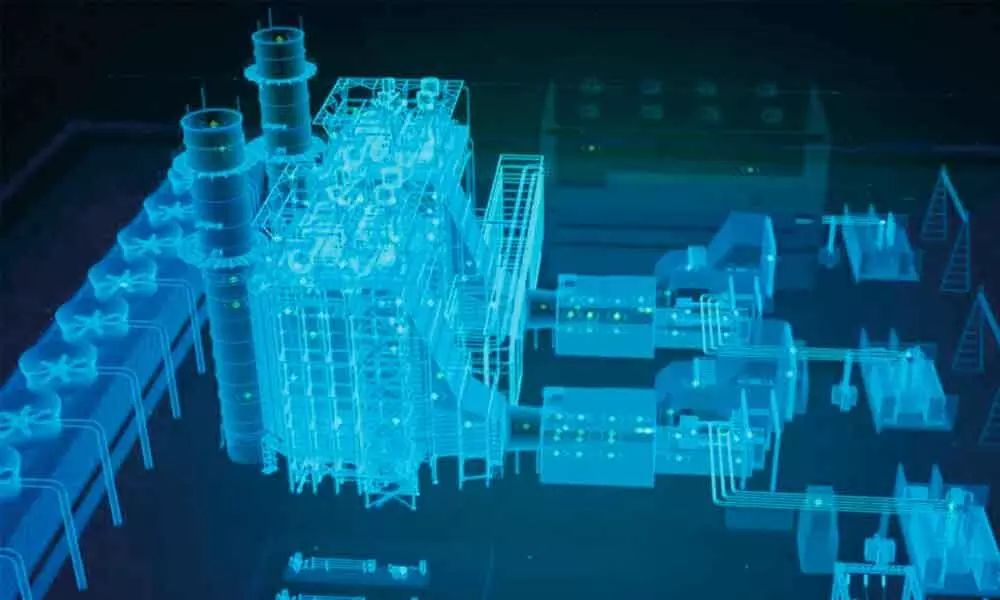Digital transformation: The future is rushing at us
Economy will revolve around containing virus and vaccination
image for illustrative purpose

Hyderabad: Digital transformation was the defining market trend of 2020. Businesses, consumers and families learned how to live in an online world. Yet we are at just the beginning of a long-term shift to digital. To understand why, consider the implications of the 5G infrastructure upgrade, just one of many transformations underway, according to a comprehensive report by the leading private bank JP Morgan on global situation post-pandemic and economic outlook for 2021.
"In 2021, we expect the number of 5G smartphones purchased by consumers to double to 450 million. But, as significant as 5G is for the consumer market, the real opportunity could lie in enterprise applications," the report adds.
A factory's output might be customized. Real-time customer order data could inform the manufacturing process. A consumer may be able to order the right color or perfect size, and the producer might not have to charge a fee. The factory of the future could also be local.
This future factory may be a reality sooner than you might think.
The pandemic accelerated our move to automation, as robots do not get sick or spread viruses. Automation can also drive cost savings and increase productivity, which are key to profit recovery.
Successful virus containment
In Asia, we see varying levels of need for additional stimulus. China was able to contain the virus relatively quickly and effectively. It was therefore less dependent on monetary and fiscal policy to help bridge the economic gap that lockdowns created.
India, Indonesia and the Philippines have struggled to balance virus containment with the need for economic growth. "We think a full recovery in these economies ultimately depends on a globally available vaccine," the report adds.
Covid-19 is still an important risk, but we believe its influence on your portfolio will likely diminish throughout 2021.
"We do expect a vaccine, and relatively soon. It should be available to certain high-risk populations in the developed world by the first quarter of 2021 and broadly thereafter. So why won't a vaccine be a complete solution?", the report says.
India will likely try to ease policy, which could stoke inflation higher and deficits wider. Japanese policies will likely remain supportive because the Covid-19 hit has exacerbated deflationary pressures. To make matters worse, the economy was already in a domestic policy-induced recession before the pandemic spread to this country.
Thrust on new ways of checking virus spread
It seems likely that the world will have to continue to rely on other ways to control the spread through 2021: rapid testing, contact tracing, mask compliance and restrictions on high-risk activities. Improved treatments and procedures should deliver continued progress on treating those infected.
"Overall, we are focusing on investments that can work with or without an effective vaccine. These include companies linked to digital transformation, healthcare innovation and household consumption. Sovereign yields will probably rise and yield curves steepen as global activity and risk sentiment improve along with medical progress," the report added.
This could create tactical opportunities in equities sensitive to interest rates (such as banks). However, we believe the gravity of easy central bank policy will keep rates near secular lows.
"We expect the global economy to continue to heal. That argues for more modest dollar weakness relative to its trading partners." That said, "We do not expect the US dollar to lose its status as the world's reserve currency for the foreseeable future. If the dollar continues to weaken, it will be a sign that the global recovery is occurring, not that the world is on the precipice of a currency regime change," the report reiterated.
Revolution in farming
To make food production more sustainable, the world is turning to agriculture technology (Agri Tech) and using modern technology to improve traditional food production's yield, efficiency and sustainability. Vertical farming (growing food indoors in stacked vertical layers) is getting a lot of attention, and its market is expected to increase almost 6x globally between 2018 and 2026. With this revolution, food producers can grow more food on the same amount of land, and they can recreate any climate on earth. You can even grow basil in conditions based on the summer of 1997 in Genoa, Italy, which is widely regarded as the perfect summer for the herb. A circular economy is not only possible, it is already happening.

